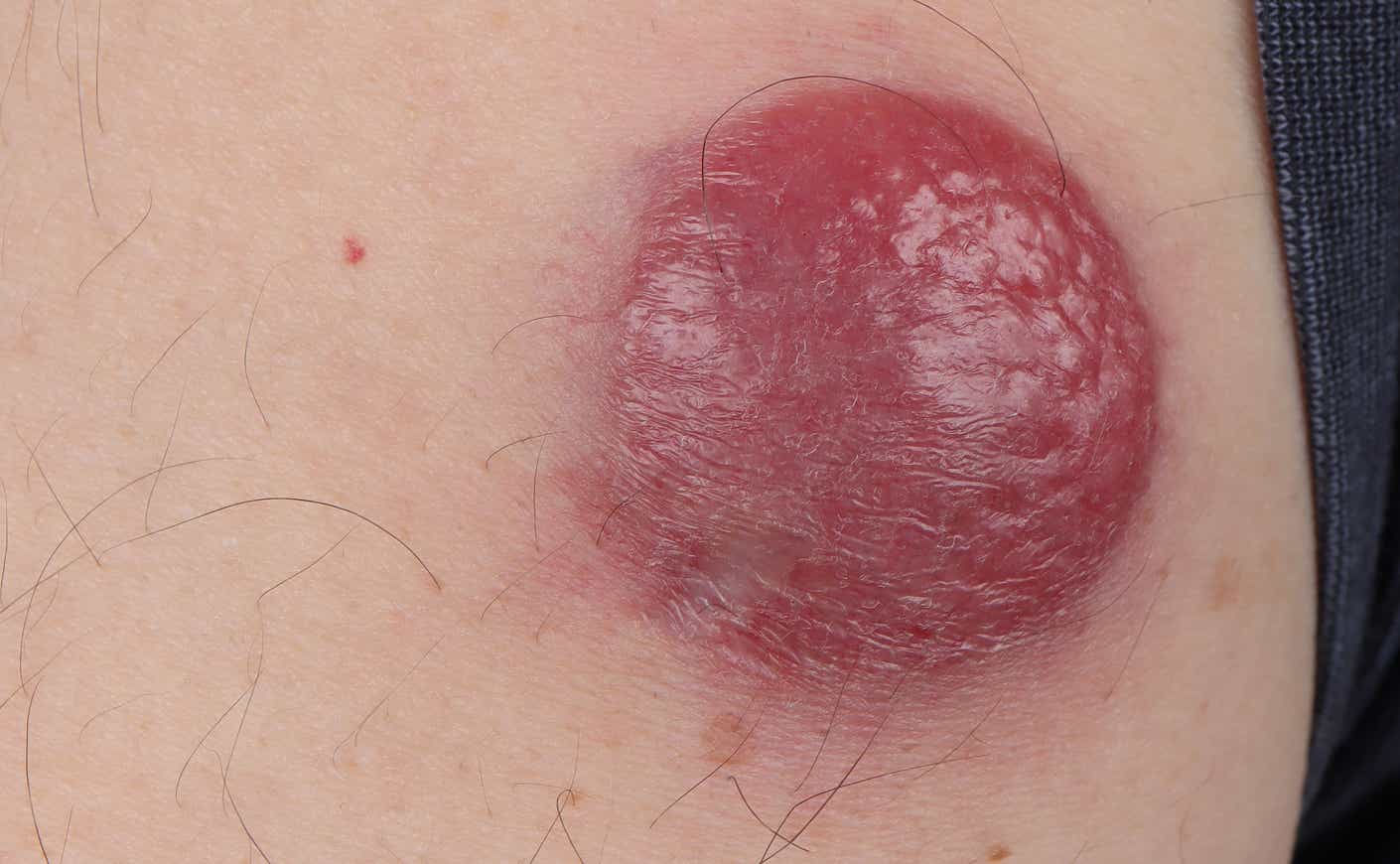Jimmy Buffett died last week at 76 after battling Merkel cell carcinoma, according to a statement on the “Margaritaville” singer’s website.
Buffett lived with the condition, a rare and aggressive form of skin cancer, for four years — all while receiving treatment and continuing to entertain his devoted “Parrotheads." (He was still performing live earlier this summer!) But was he suffering behind the scenes? Here's a closer look at the disease that took Buffett from us, from what causes it to the symptoms to look out for.
What is Merkel cell skin cancer?
Merkel cell carcinoma occurs when the Merkel cells begin to grow out of control. You're probably wondering, "What the heck's a Merkel cell?" We had a feeling you'd ask. Merkel cells are a type of skin cell found at the base of the epidermis, and they help us feel the fine details on an object or something grazing the skin, according to the American Cancer Society. They’re also considered skin neuroendocrine cells because they share some features with nerve cells and hormone-making cells, which is why the condition is also referred to as neuroendocrine carcinoma of the skin.
What does Merkel cell skin cancer look like?
Pardon the vivid imagery below, but we want to arm you with the tools to spot this disease! It typically first develops on patches of skin that see lots of sun, especially on the face, neck, or arms. But the American Cancer Society says it can crop up anywhere on the body.
The tumors often look like firm lumps about the size of a dime that are reddish or sometimes have a blue tint. They grow very fast, but don’t usually hurt. In some cases though the lumps may open and turn into ulcers or sores.

Who is at risk of Merkel cell skin cancer?
People of European ancestry and those with fair skin are at greater risk of Merkel cell carcinoma. It also appears to be more common among older people and men.
Lots of sun exposure is a risk factor, as is HIV or taking drugs that suppress the immune system. Having other types of skin cancer like basal cell carcinoma, squamous cell carcinoma, or melanoma may also raise your risk, according to the Cleveland Clinic.
What causes Merkel cell carcinoma?
Experts aren’t quite sure yet, but they do suspect that it’s linked to a virus that was first identified in 2008, called Merkel cell polyomavirus. The virus is very common, though in most cases it’s asymptomatic. But occasionally it’s thought to trigger Merkel cell carcinoma; it’s been found in about 80 percent of biopsied Merkel cell tumors, per Yale Medicine.
How rare is Merkel cell skin cancer?
The Skin Cancer Foundation describes the condition as “40 times more rare than melanoma,” affecting one in 130,000 people in the U.S. There are about 3,000 new cases each year. But over the past two decades, the rates of Merkel cell carcinoma have tripled, and it’s expected to become more common as more Americans live longer.
How to protect yourself against skin cancer
And while Buffett made a career out of crooning about celebrating life in the sun, soaking up too much of those rays — without taking the proper precautions — can put you at risk for most types of skin cancer, including Merkel cell carcinoma. So the best way to protect yourself, according to the Centers for Disease Control, is to practice sun safety. That means staying indoors or in the shade when the UV Index, which measures the strength of UV rays, reaches 3 or higher. The agency also recommends using a broad-spectrum sunscreen with a sun protection factor of 15 or higher, wearing clothes that cover your arms and legs, and shielding your face and neck with a hat. (Luckily, sun hats are back in style.)
It's also important to stay away from tanning beds, the CDC says. Getting that summer glow just isn't worth it: Indoor tanning devices have been shown to increase the risk of squamous cell carcinoma by 58 percent and basal cell carcinoma by 24 percent, per the American Academy of Dermatology.









